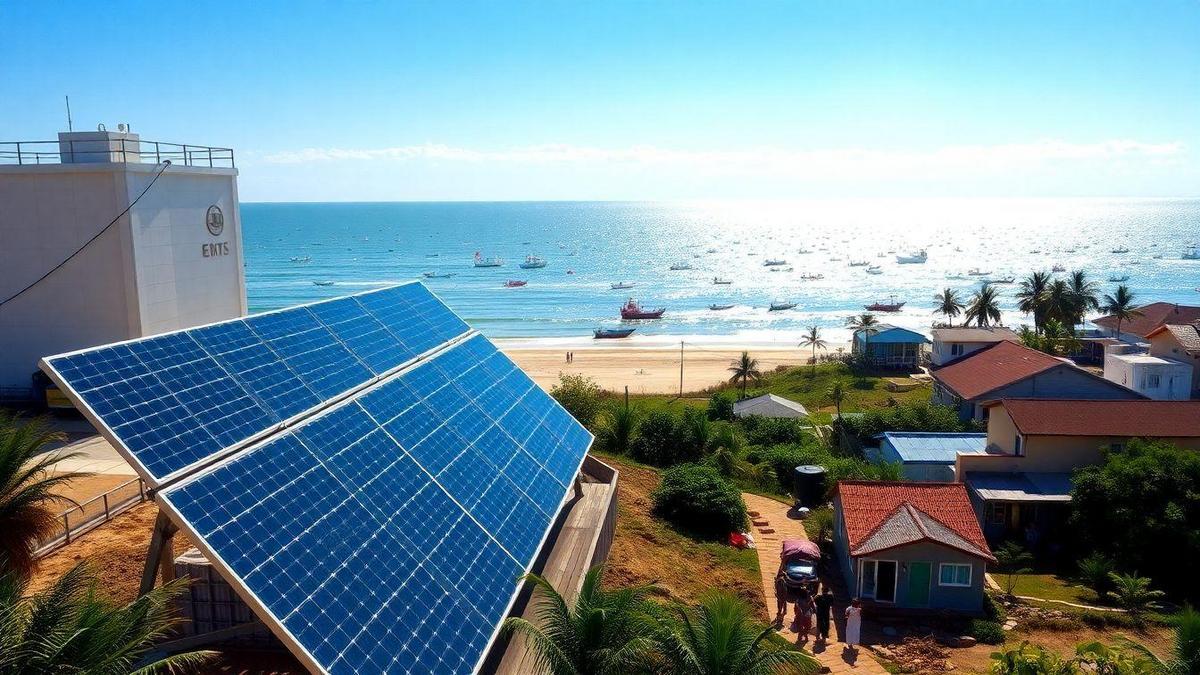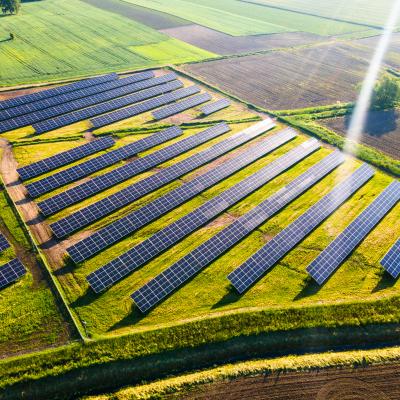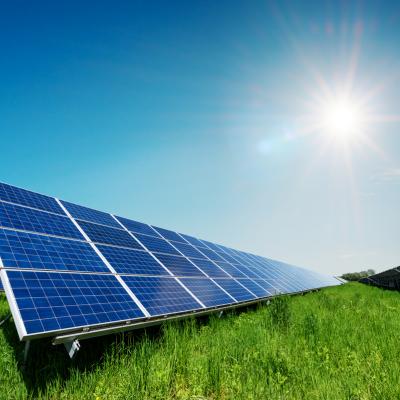Anúncios
The scarcity of potable water in coastal communities is an increasing challenge in various parts of the world. In this context, solar desalination emerges as a promising, sustainable, and accessible solution. By using solar energy, this technology transforms salty water into freshwater in a clean manner.
Combining innovation and simplicity, the process especially serves areas with limited access to traditional infrastructure. Solar desalination not only offers immediate relief but also contributes to environmental and social resilience. Its scalability potential makes it a strategic tool for the future.
Anúncios

What is Solar Desalination?
Solar desalination is a method that transforms seawater into freshwater using solar energy. There are two main approaches: solar distillation and solar-powered reverse osmosis. Both operate without fossil fuels, reducing environmental impacts.
Solar distillation heats the water until it evaporates, separating the salt during the process. This vapor is then condensed, generating potable water. It is a simple and effective technique, ideal for small coastal communities.
On the other hand, solar reverse osmosis uses solar-powered pumps to force seawater through special membranes. These membranes retain salts and impurities, releasing potable water on the other side. It is a more complex system but with a high production capacity.
Both technologies can be adapted according to local conditions and the population’s demand. This makes solar desalination a versatile solution applicable in different contexts. The choice between the methods depends on the budget and the community’s needs.
Environmental Benefits of Solar Desalination
One of the main attractions of solar desalination is its reduced ecological footprint. By using clean and renewable energy, it avoids the emission of polluting gases. This is crucial for regions vulnerable to climate change.
This technology also contributes to the conservation of natural water resources. With less extraction of freshwater from terrestrial sources, pressure on aquifers and rivers is reduced. Using the sun as an energy source enhances this sustainability.
Additionally, the absence of fossil fuels lowers the risks of environmental contamination. This is particularly important in fragile coastal areas, which host sensitive biodiversity. Solar desalination aligns with sustainable development principles.
Finally, the environmental impact of brine disposal can be minimized with proper management. Modern technologies allow for dilution or treatment of these wastes. Thus, the process becomes even safer and more efficient for the environment.
Economic Feasibility for Coastal Communities

Installing solar systems may require a significant initial investment. However, operational costs over time are significantly lower. Solar energy, being free and abundant, reduces electricity expenses.
With the continuous decline in the price of solar panels, these systems are becoming increasingly accessible. This is particularly advantageous for communities with limited budgets. Government subsidies and partnerships also help make projects feasible.
Moreover, the maintenance of solar desalination systems is simple and low-cost. This facilitates continuous operation even with limited technical resources. Energy autonomy contributes to the financial independence of communities.
In the long term, the benefits outweigh the initial investments. Solar desalination can avoid water transportation expenses and reduce waterborne diseases. This results in both direct and indirect economic gains.
How Solar Desalination Works for Coastal Communities
Solar desalination is a process that uses sunlight to convert seawater into freshwater, making it a crucial technology for coastal communities facing a shortage of potable water. The process mainly involves two methods: solar distillation and solar reverse osmosis. Solar distillation uses solar energy to heat seawater, causing it to evaporate and then condense into freshwater. On the other hand, solar reverse osmosis uses solar power to drive pumps that push seawater through membranes that filter out salt and impurities, resulting in potable water. Both methods are designed to be efficient and sustainable, addressing the urgent need for clean water in communities often surrounded by abundant seawater.
The efficiency of solar desalination systems is influenced by local climatic conditions, sunlight availability, and technological advancements. In regions with high solar insolation, solar desalination can be particularly effective, providing a reliable source of freshwater. Additionally, integrating solar energy systems with existing water infrastructure can enhance the overall water supply for coastal communities. By reducing reliance on fossil fuels and minimizing the carbon footprint, solar desalination for coastal communities without clean water not only meets immediate water needs but also contributes to long-term sustainability goals.
Advantages of Solar Desalination for Coastal Communities without Clean Water
One of the key advantages of solar desalination is its environmental sustainability. Unlike traditional methods that rely on fossil fuels, solar desalination uses renewable energy, significantly reducing greenhouse gas emissions. This is especially important for coastal communities that are often vulnerable to the impacts of climate change. By utilizing solar energy, these communities can mitigate their environmental impact while ensuring a reliable source of freshwater.
Another advantage is the economic viability of solar desalination systems. While the initial investment may be higher than conventional methods, the long-term savings in energy and maintenance costs make solar desalination an attractive option. Additionally, the decreasing costs of solar technology and the potential for government subsidies can further increase the economic viability of these systems. For coastal communities with limited financial resources, solar desalination for coastal communities without clean water represents an opportunity to achieve water security without incurring unsustainable debt.
In addition to environmental and economic benefits, solar desalination can increase community resilience. By providing a consistent source of freshwater, these systems can help communities better withstand droughts and other water-related challenges. This resilience is particularly crucial in regions where water scarcity can lead to social unrest and migration. By investing in solar desalination, coastal communities can strengthen their capacity to endure environmental shocks and ensure a stable water supply for future generations.
Finally, solar desalination promotes technological innovation and local job creation. The implementation of solar desalination systems requires skilled labor for installation and maintenance, which can create job opportunities within the community. Moreover, as technology continues to advance, there will be opportunities for local entrepreneurs to engage in research and development, leading to further economic growth and diversification. This aspect of solar desalination for coastal communities without clean water not only meets immediate water needs but also promotes community development and empowerment.
How to Implement Solar Desalination Solutions in Coastal Communities

Implementing solar desalination solutions in coastal communities involves several key steps that can help ensure the success and sustainability of the project. First, it is essential to conduct a comprehensive assessment of local water needs and resources. This includes evaluating the quality and quantity of available seawater, understanding the community’s current water supply challenges, and identifying potential sites for solar desalination systems. Engaging with local stakeholders, including community members and government authorities, is crucial during this phase to gather insights and foster support for the project.
Next, selecting the appropriate solar desalination technology is vital for the success of the project. Factors to consider include the community’s specific water needs, local climatic conditions, and available budget. For example, smaller communities may benefit from solar distillation units, while larger populations may require more extensive solar reverse osmosis systems. Collaborating with solar technology and water management experts can help ensure the chosen solution is effective and sustainable.
Once the technology is selected, securing funding and resources is the next critical step. This may involve applying for grants, seeking partnerships with non-governmental organizations, or exploring public-private partnerships. Additionally, local governments can play a facilitating role in providing funding opportunities or offering incentives for solar desalination projects. A transparent and inclusive financing process can help build trust and support within the community.
Finally, implementing the solar desalination system requires careful planning and execution. This includes installing solar panels, desalination units, and the necessary infrastructure for water distribution. Training local personnel in system operation and maintenance is also essential to ensure its long-term sustainability. Community engagement throughout the implementation process can help foster a sense of ownership and responsibility, leading to the success of the project.
Did You Enjoy Learning About Solar Desalination for Coastal Communities Without Clean Water?
Solar desalination represents a promising solution for coastal communities struggling with access to clean water. By harnessing renewable energy, these systems not only provide freshwater but also contribute to environmental sustainability and community resilience. The potential for economic growth and job creation further highlights the importance of investing in solar desalination technologies for coastal communities without clean water.
As we face growing challenges related to water scarcity and climate change, exploring innovative solutions like solar desalination is more important than ever. Communities that embrace this technology can ensure a brighter and more sustainable future for generations to come.
Frequently Asked Questions
What is Solar Desalination?
Solar desalination is a method that uses sunlight to transform salty water into potable water. It is a practical solution for coastal communities.
How Does Solar Desalination Help Communities Without Clean Water?
It provides a source of potable water by harnessing an abundant natural resource: the sun. This helps address water scarcity.
What Are the Benefits of Solar Desalination for Coastal Communities?
Benefits include clean water, low operational costs, and reduced environmental impact. It is a sustainable and affordable alternative.
Is Solar Desalination Expensive?
No, compared to other technologies, solar desalination can be more economical. Total costs depend on the size and technology used.
Where Can I Find More Information About Solar Desalination for Coastal Communities Without Clean Water?
You can search online, consult community groups, or speak with experts. This information is rapidly spreading.
